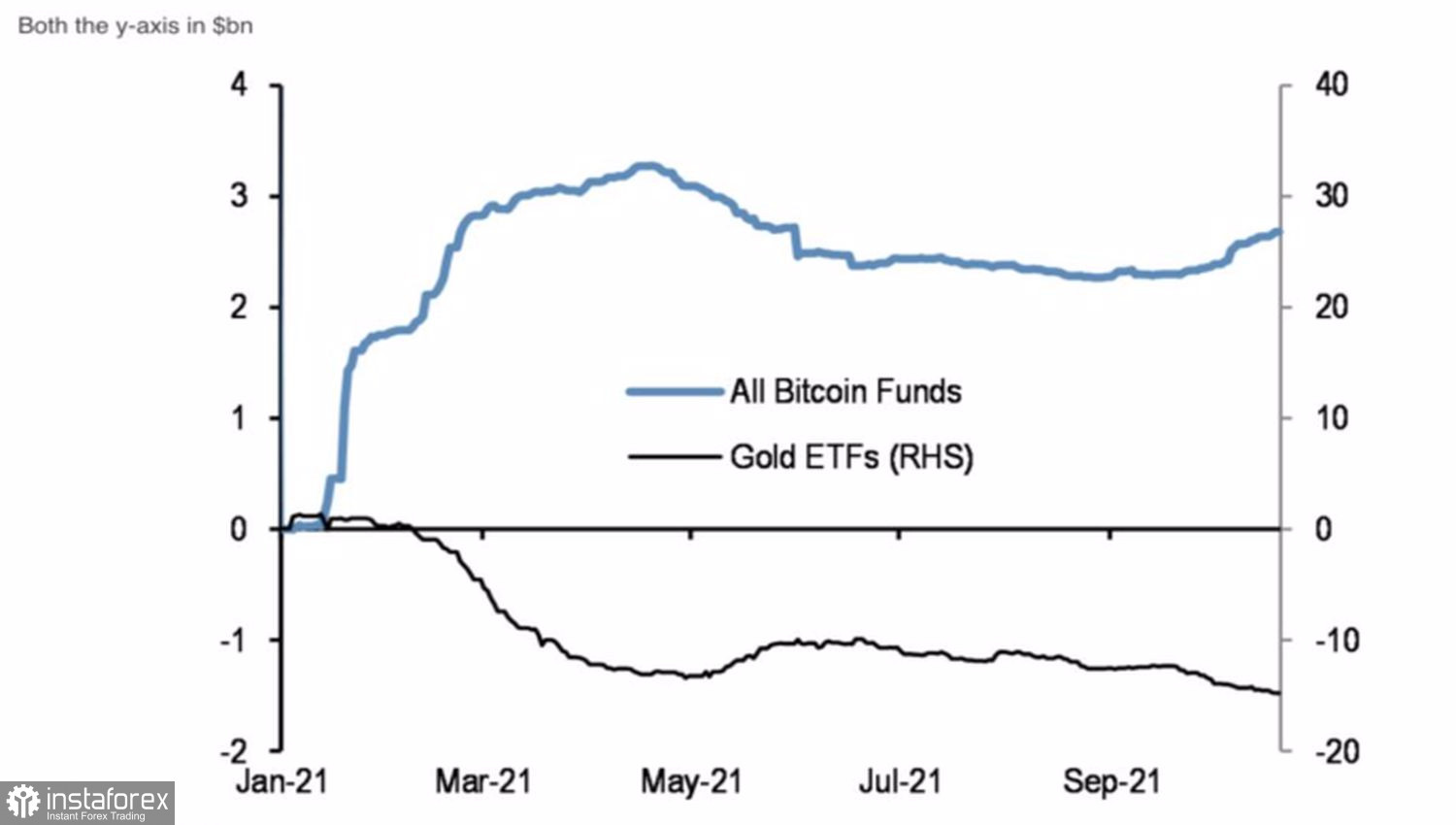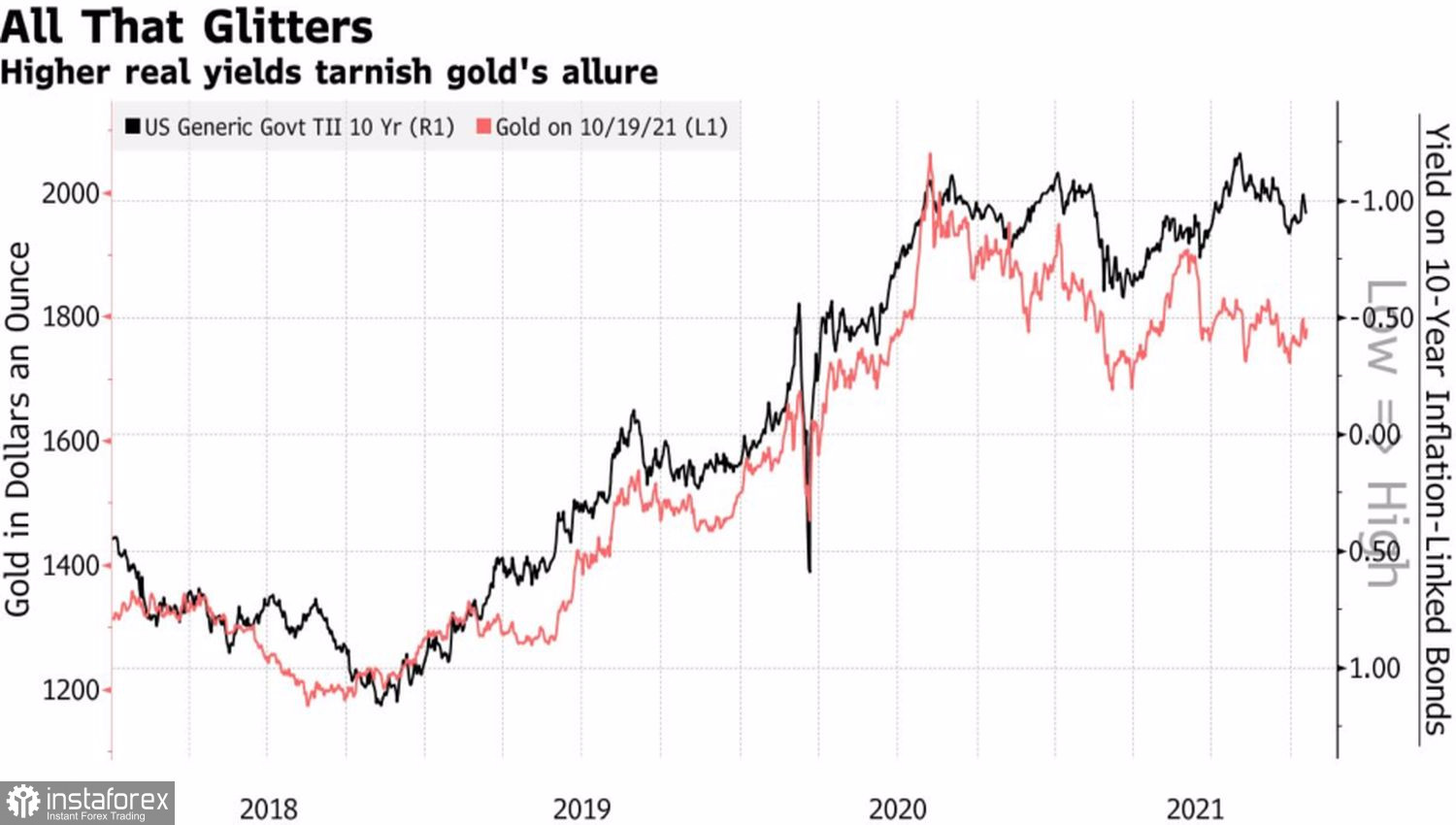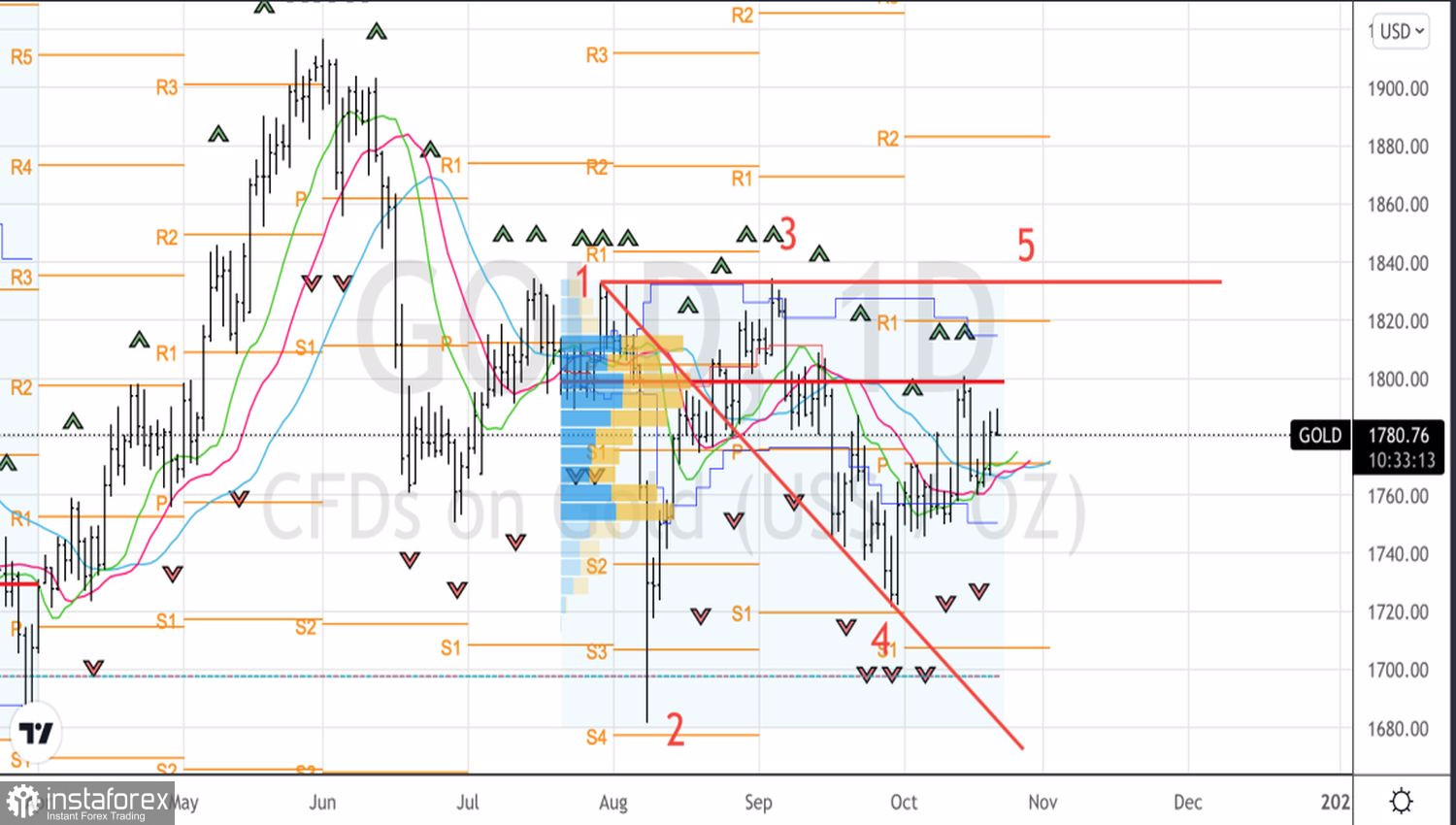A holy place is never empty. If you cannot perform the functions previously assigned to you, others will. Gold is traditionally perceived as a hedge against inflation risks, but in 2021 consumer prices in the United States have been growing by 5% or more for 4 consecutive months, which has not happened since the 1990s, and the precious metal has lost about 6% of its value since the beginning of the year. Should it be kept in portfolios amid a potential change in the inflationary regime? Many investors think not, and prefer cryptocurrencies. Which, ironically, arose later than the last period of protracted high inflation.
According to JP Morgan, the growth of bitcoin to new all-time highs is facilitated not by the launch of ETFs, but by the desire of investors to insure the risks of excessively high prices. According to 8 out of 10 hedge funds from Europe and the United States, cryptocurrencies have a place in portfolios, with more than half of respondents indicating that high inflation is fueling their interest in this asset class.
If you have a strategy and it doesn't work, you need to change something. Gold does not protect against CPI growth, and investors are throwing it off their hands. This is evidenced by the capital outflow from the largest specialized exchange-traded fund SPDR Gold Shares of $10 billion since the beginning of the year and $3.6 billion over the past 4 months. By contrast, interest in bitcoin is growing steadily.
Trends in Capital Flows in ETFs Focused on Gold and Bitcoin

The precious metal is clearly losing the competition to cryptocurrencies, but it is not going to throw a white flag in front of the US dollar. In the quotes of the USD index, the factor of the start of the normalization of monetary policy in November is laid, however, the mixed comments of FOMC officials do not allow us to understand exactly when the Fed will raise rates. And this circumstance allows the "bulls" in XAUUSD to stay afloat.
According to UBS, gold will find support over the next one to two months thanks to the energy crisis, as well as the associated slowdown in global GDP growth and growing risks of stagflation. Nevertheless, in the medium and long term, the bank considers itself to be a "bear" in precious metals, predicting its fall to $1,700 and $1,600 per ounce by the end of March and December 2022.
In my opinion, the current XAUUSD consolidation is more related to a split in the ranks of the Fed. According to the Federal Reserve Bank of Cleveland President Loretta Mester, it is necessary to complete QE first, and only then think about raising the rate. FOMC official Christopher Waller notes that the central bank has a margin of safety - it may not rush to tighten monetary policy if inflation stabilizes at current levels by the end of the year, rather than accelerating further. Such speeches by the Federal Reserve representatives slow down the US dollar, but they do not prevent the yield of Treasury bonds from increasing, which puts pressure on the precious metal.
Dynamics of gold and US bond yields

Technically, a return above the fair value of $1,800/oz is likely to be a pyrrhic victory for the gold bulls. Active sales should be expected from the levels of $1,815 and $1,835.
Gold, Daily chart

 English
English 
 Русский
Русский Bahasa Indonesia
Bahasa Indonesia Bahasa Malay
Bahasa Malay ไทย
ไทย Español
Español Deutsch
Deutsch Български
Български Français
Français Tiếng Việt
Tiếng Việt 中文
中文 বাংলা
বাংলা हिन्दी
हिन्दी Čeština
Čeština Українська
Українська Română
Română

